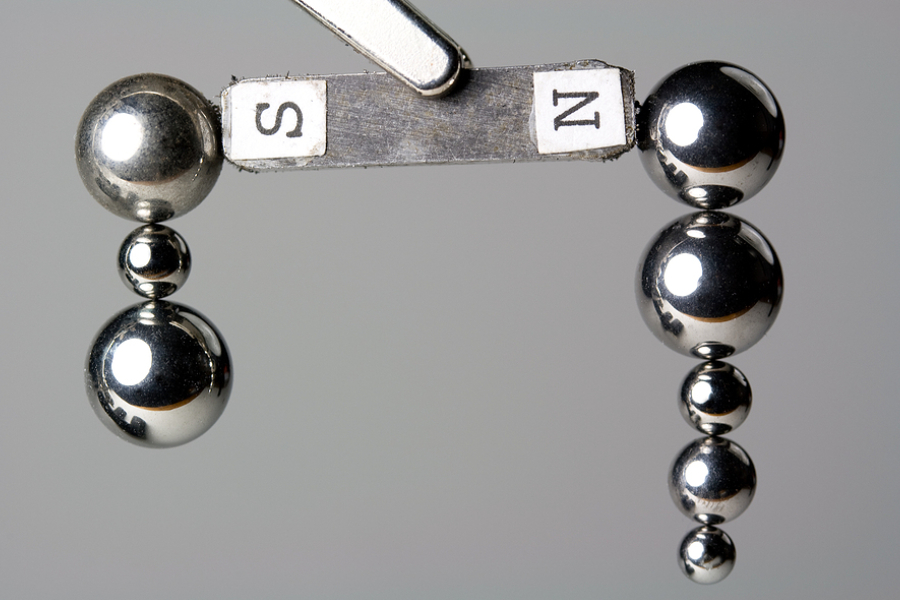Will Magnets Diminish In Magnetism Over A Period Of Time?

Few things in life are known to get better over time. However, the same cannot be said for magnets. Toy magnets lose their strength after a couple of years, and fridge magnets start to fall off the surface over time. All in all, the term ‘permanent magnets’ might not be so permanent after all.
Demagnetisation – This is the process of the magnet losing its magnetic capabilities. It can be done artificially or naturally. In most cases, factors such as corrosion, hysteresis loss, improper storage, loss of volume resulting from mechanical damage, and extreme temperature changes can cause magnets to diminish in magnetism over some time.
What is magnetism?
Before exploring demagnetisation further, let us understand the fundamentals of magnetism.
There are four fundamental forces of the universe: Gravitational force, electromagnetic force, weak force, and strong force. Magnetism, or electromagnetic force, is a by-product of moving charged sub-atomic particles, such as electrons. The negatively charged particles orbit around the nucleus constantly while rotating about their own axes. The rotational movement, also known as electron spin, is the contributing factor to the generation of repulsive or attractive forces, which we know as magnetism.
In other words, the respective movements generate their own magnetic dipole, which are combined to create a net atomic magnetic dipole, which is the North and South poles that we are so familiar with. However, there have been studies to prove that there is such a thing as magnetic monopoles, in which there are no North and South poles.
Pauli’s exclusion principle
Now, according to the explanation of magnetism above, every electron is technically its own magnet. Since everything in this universe contains electrons, would not that make everything magnetic? The answer is no – because most electrons cancel one another’s magnetic field.
According to Pauli’s exclusion principle, electrons that are within identical orbital shells will generate opposite spins. Hence, they will cancel one another’s magnetic field. In some elements, such as cobalt and iron, the final valence shell is only half-filled, containing unpaired electrons.
When forming a crystal, atoms align their magnetic fields in the same or different direction, depending on what causes the least internal energy, forming magnetic domains. This response forms the fundamental for classifying various magnetic materials. A material or element begins to behave like a permanent magnet when all magnetic domain within it is aligned.
What causes a magnet to demagnetise?
A magnetic material is not completely magnetic unless its domains are all aligned. Hence, a slight change in any domain can result in the loss of magnetic strength. There are several natural factors that cause changes in the magnetic domains.
1. Heat
At the microscopic level, atoms are vibrating constantly. The strength of their vibrations depends on how much energy they receive, which depends on the temperature. A slight change in temperature can affect the intensity of their vibrations, affecting their magnetic strength.
When exposed to high temperatures, the magnet’s atoms vibrate increasingly, forcing some of its magnetic domains to be out of alignment, affecting the overall magnetic strength. If the right amount of heat is applied, it can result in total misalignment of all magnetic domains, causing the magnet to demagnetise completely. This temperature point is known as Curie temperature or Curie point.
2. Improper storage
Most magnets consist of a good amount of iron, which is known to corrode well when there is water and oxygen present. The strongest and most common type of permanent magnets, neodymium magnets, are the most susceptible to corrosion due to their high iron content of more than 60 per cent. Corrosion affects the underlying chemical structure that makes the material magnetic, from Fe to Fe2O3. Hence, proper storage is vital when it comes to magnetic materials.
Additionally, a weaker magnet that is stored near a stronger magnet can cause the weaker one to lose some, if not all, of its magnetic capabilities. This is because the stronger magnet will force the magnetic domains of the weaker magnet to be misaligned. This effect is called the hysteresis loss.
3. Structural damage
The magnet’s strength depends on the size of the magnet. Hence, any general structural damage or size reduction to the magnet will also decrease its magnetic capabilities. Furthermore, heavy or sharp impacts, such as dropping the magnet on a hard surface or hammering it repeatedly, can cause the magnetic domains to be forced out of alignment, reducing its magnetic capabilities.
Conclusion
In order to preserve the lifespan of your magnets, you need to store them in an isolated and dry area. If multiple magnets are stored in a single area, such as fridge magnets, it is vital to stick opposing ends with one another to avoid self-demagnetisation.
If you are interested in finding out more about the physics behind electromagnetism, then look no further than our classes at Physics Tuition. With experienced teachers behind the helm, we are sure to take your physics fundamentals to the next level! Contact us to find out more!